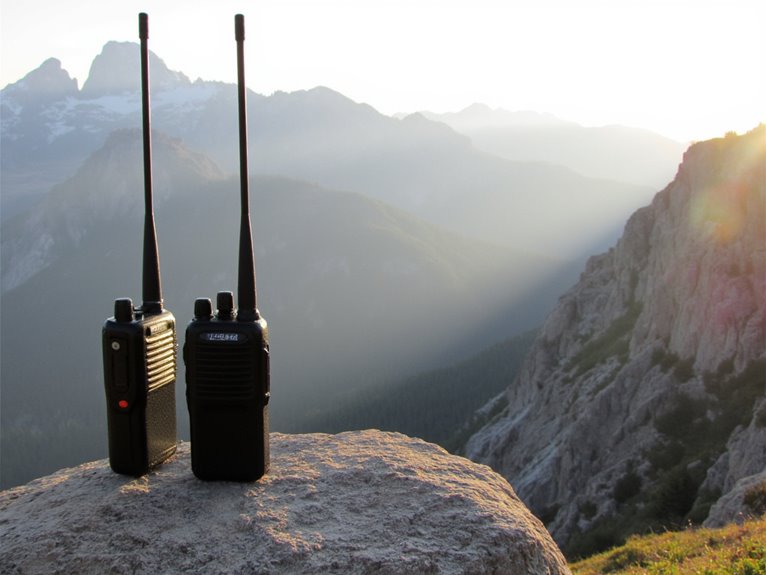Is Bear Spray Harmful to Humans?
Bear spray, while effective at deterring aggressive bear behavior, poses significant health risks to humans. Skin contact can cause irritation, blistering, and rashes, while eye exposure leads to intense burning, tearing, and temporary vision impairment. Inhalation of the spray can trigger respiratory issues, ranging from mild irritation to severe distress, and prolonged exposure can lead to chronic health problems. Essential to exercise caution when handling bear spray and seek immediate medical attention if symptoms persist or worsen. To better understand the risks and learn how to safely handle bear spray, vital to understand the ingredients, effects, and proper protocols for handling and responding to accidents.
We are supported by our audience. When you purchase through links on our site, we may earn an affiliate commission, at no extra cost for you. Learn more. Last update on 7th January 2026 / Images from Amazon Product Advertising API.
Understanding Bear Spray Ingredients
Contained within the pressurized canisters of bear spray are a potent blend of capsaicin and related capsaicinoids, which are the primary active ingredients responsible for deterring aggressive bear behavior.
These naturally occurring compounds are derived from chili peppers and are highly effective at disrupting a bear's senses, causing irritation and discomfort.
The capsaicinoids work by binding to receptors in the bear's nasal passages and eyes, creating a temporary but intense burning sensation that motivates the bear to retreat.
The concentration of capsaicin and related capsaicinoids in bear spray can vary depending on the manufacturer, but most products contain between 1-2% capsaicinoids.
This potent formula allows bear spray to serve as a reliable deterrent against aggressive bears.
Effects on Human Skin and Eyes
When bear spray is deployed, it can have unintended consequences for humans in the vicinity.
The potent capsaicinoids and related capsaicinoids in bear spray can cause skin irritation, ranging from mild discomfort to severe reactions, and eye exposure can lead to intense burning, tearing, and temporary vision impairment.
In addition, respiratory issues can arise from inhalation of the spray, underscoring the importance of understanding the risks associated with bear spray use.
Skin Irritation Risks
Most bear sprays contain capsaicin and related capsaicinoids, which can cause skin irritation, including redness, itching, and burning sensations, particularly if not used properly or in high concentrations.
Prolonged exposure to bear spray can lead to more severe skin reactions, such as blistering, rashes, or allergic contact dermatitis.
In rare cases, individuals with sensitive skin or pre-existing skin conditions may experience more severe reactions.
When using bear spray, it is crucial to follow the manufacturer's instructions and take necessary precautions to minimize skin exposure.
Wearing protective clothing, including gloves and a mask, can help reduce the risk of skin irritation.
If skin irritation occurs, wash the affected area with soap and water, and seek medical attention if symptoms persist or worsen.
Eye Exposure Dangers
Direct exposure to bear spray can cause severe and debilitating eye irritation, potentially leading to corneal damage, vision impairment, or even blindness.
The capsaicin and related capsaicinoids in bear spray can bind to receptors in the eye, triggering an intense inflammatory response.
This can lead to symptoms such as intense burning, tearing, and redness, as well as blurred vision and sensitivity to light.
If not treated promptly, eye exposure to bear spray can result in long-term damage, including corneal ulcers and scarring.
Prompt medical attention is crucial if bear spray comes into contact with the eyes to minimize the risk of permanent eye damage.
Respiratory Issues
Inhalation of bear spray can trigger a spectrum of respiratory issues, ranging from mild irritation to severe respiratory distress, as the potent capsaicinoids inflame the mucous membranes and constrict airways.
This can lead to symptoms such as coughing, wheezing, and shortness of breath.
In severe cases, it can cause bronchospasms, which can be life-threatening, especially for individuals with pre-existing respiratory conditions like asthma.
If inhaled, bear spray can also exacerbate existing respiratory issues, making it essential to exercise caution when handling the spray and seeking immediate medical attention if symptoms persist or worsen.
Inhaling Bear Spray Accidentally
Accidental inhalation of bear spray can lead to severe respiratory distress, eye irritation, and skin irritation.
Inhaling bear spray can cause immediate symptoms such as coughing, wheezing, and shortness of breath.
The capsaicin and related capsaicinoids in bear spray can irritate the eyes, nose, throat, and lungs, leading to discomfort and distress.
If inhaled, move to an area with fresh air and call for medical assistance if symptoms persist or worsen.
It is vital to handle bear spray with caution and follow the manufacturer's instructions to minimize the risk of accidental inhalation.
Always use bear spray in well-ventilated areas, and avoid spraying it in enclosed spaces.
Long-Term Exposure Risks
Prolonged exposure to bear spray residue can lead to chronic health issues, including respiratory problems, skin conditions, and eye complications, even if the initial symptoms appear to have resolved.
Long-term exposure to the active ingredients in bear spray, such as capsaicin and related capsaicinoids, can cause persistent inflammation and irritation.
This can result in chronic respiratory issues, including bronchitis, asthma, and chronic obstructive pulmonary disease (COPD).
Additionally, skin exposure can lead to dermatitis, eczema, and other skin conditions.
To minimize exposure and prevent long-term health consequences, necessary precautions must be taken and proper decontamination procedures must be followed.
Furthermore, taking precautions to minimize exposure and following proper decontamination procedures are crucial.
Safe Handling and Storage
Proper storage and handling of bear spray are critical to preventing unintended exposure and minimizing the risk of accidents.
When not in use, bear spray should be stored in a secure, inaccessible location, such as a high shelf or locked cabinet, out of reach of children and pets.
The canister should be kept upright, away from heat sources, open flames, and sparks.
Always check the expiration date and inspect the canister for signs of damage or corrosion before use.
When handling bear spray, wear gloves and safety glasses to protect skin and eyes from accidental discharge.
Verify the wind is not blowing towards you, and avoid spraying in enclosed spaces.
Make certain the wind direction is safe before using the bear spray.
Accident Response and First Aid
When bear spray is accidentally discharged, it's essential to respond swiftly and effectively to minimize harm.
Immediate exposure symptoms include respiratory distress, skin irritation, and eye inflammation, which can escalate rapidly if left untreated.
In this section, we will outline the emergency response procedures to follow in the event of accidental exposure, ensuring prompt and appropriate first aid administration.
Immediate Exposure Symptoms
Direct exposure to bear spray can cause intense irritation to the eyes, skin, and respiratory system, leading to a range of immediate symptoms that require prompt attention.
Victims may experience severe eye irritation, including burning, tearing, and blurred vision. Skin exposure can cause redness, itching, and a burning sensation.
Respiratory symptoms may include coughing, wheezing, and shortness of breath. In severe cases, exposure can lead to nausea, vomiting, and even anaphylaxis.
Prompt recognition and response are crucial to minimize the effects of bear spray exposure. If you or someone else has been exposed, move to a well-ventilated area and flush affected areas with water.
Remove contaminated clothing and seek medical attention if symptoms persist or worsen.
Emergency Response Procedures
In the event of bear spray exposure, swift and effective emergency response procedures are vital to mitigate the severity of symptoms and prevent further harm.
The first responder should prioritize the evacuation of the affected individual to a well-ventilated area, away from the contaminated zone.
Remove contaminated clothing and wash the affected skin with soap and water.
Flush exposed eyes with water for at least 15-20 minutes.
Administer oxygen if the victim is experiencing respiratory distress.
If symptoms persist or worsen, seek immediate medical attention.
To ensure proper response, call emergency services or a poison control center for guidance and support.
Always follow local protocols and guidelines for responding to bear spray exposure.




